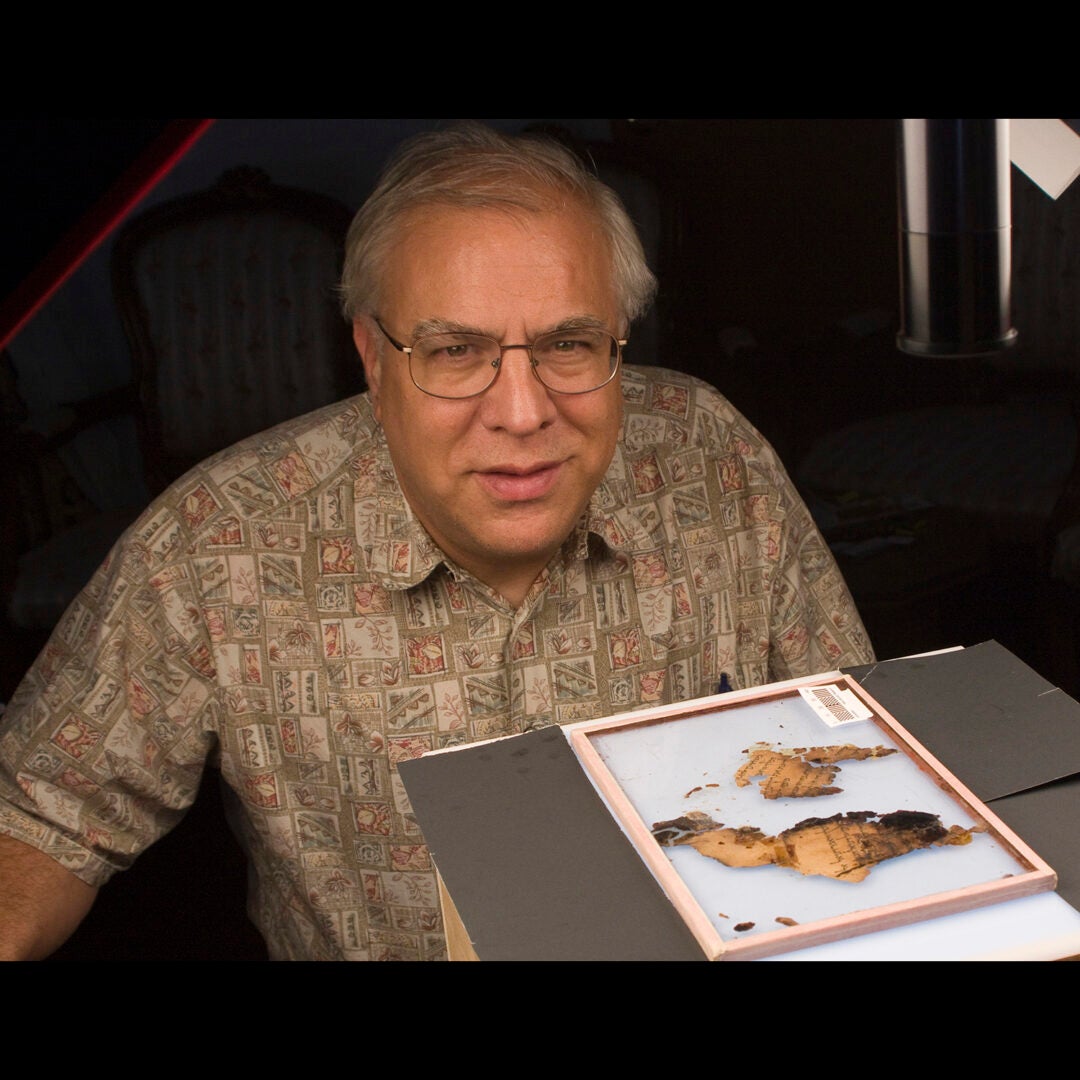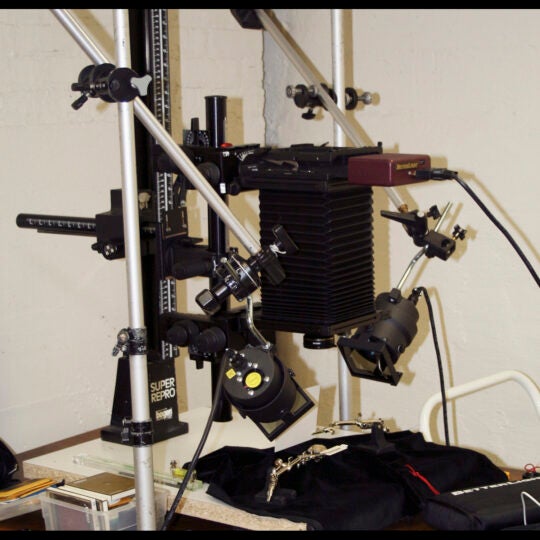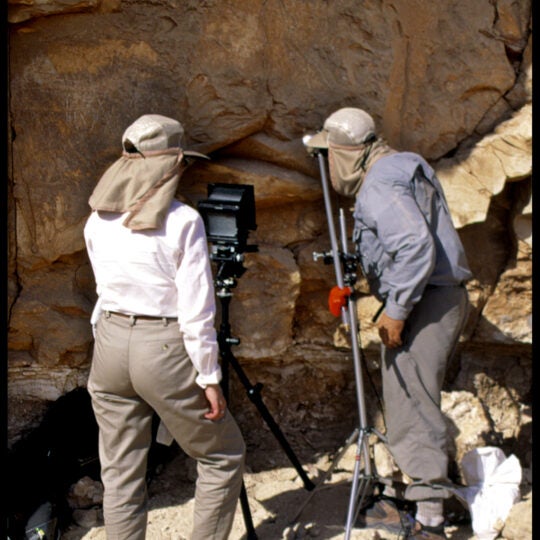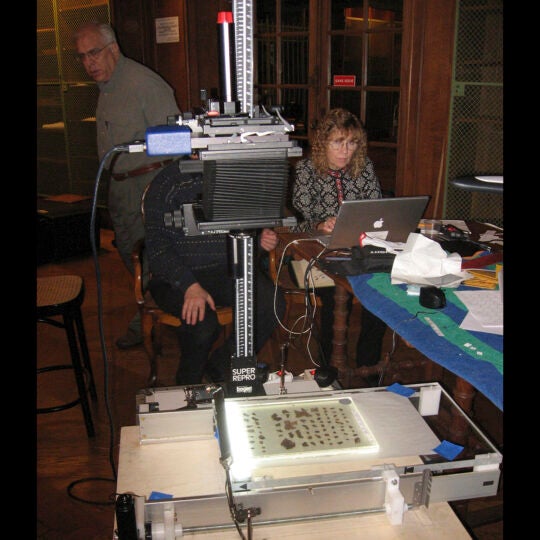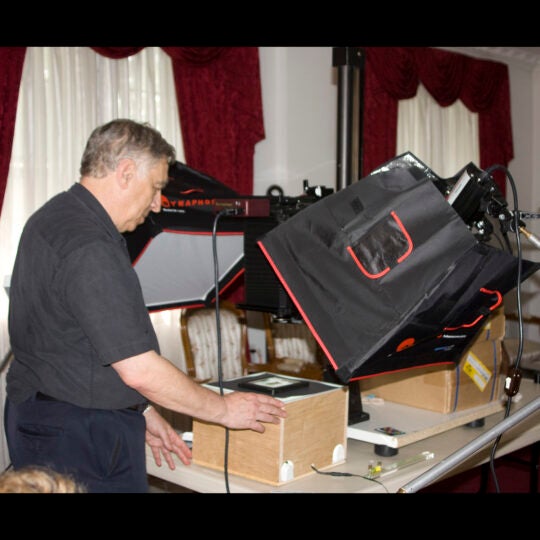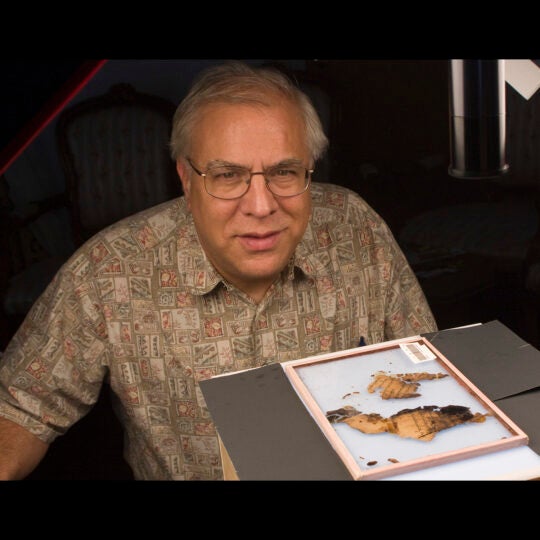Large Format Cameras and Digital Backs
Almost every object or manuscript we photograph requires a special technique, but the key to all of these techniques is light. Some texts are incised in stone and so we use light to create shadows in the shape of the letters that will be caught on film. Some documents are written on parchment or papyrus and so we want a soft, diffuse light that will create no shadows at all. Some writing is so tiny that we have used a “light brush” that directs a very narrow beam of light to a small area. Some writing cannot be seen at all because the background is so dark that it looks like ink. In that case we might use infrared techniques that make the ink stand out while the background “drops out.” Ken Zuckerman likes to say that we have a whole “bag of tricks” out of which we can take whatever technique is best for a particular object.
An important principle is the production of “high resolution” images. Because of this concern for resolution, we have used large format cameras on most of our projects for capturing conventional images. This is a camera, like the one shown below, that will take film that is 4 inches by 5 inches (when we were still using film), or a digital scanning back that captures, for example, 10200 x 13600 pixels. The resulting images have very high resolution.
Large format camera setup
A view camera with Better Light scanning back and lights. A scanning back acts in a way that is similar to a desktop scanner. A very narrow sensor passes along the surface of the field of view, one pixel at a time. This allows for very high resolution. The sensor that is used allows for much better color capture. Using a view camera means that various color filters and infrared filters can be interchanged on the lens.
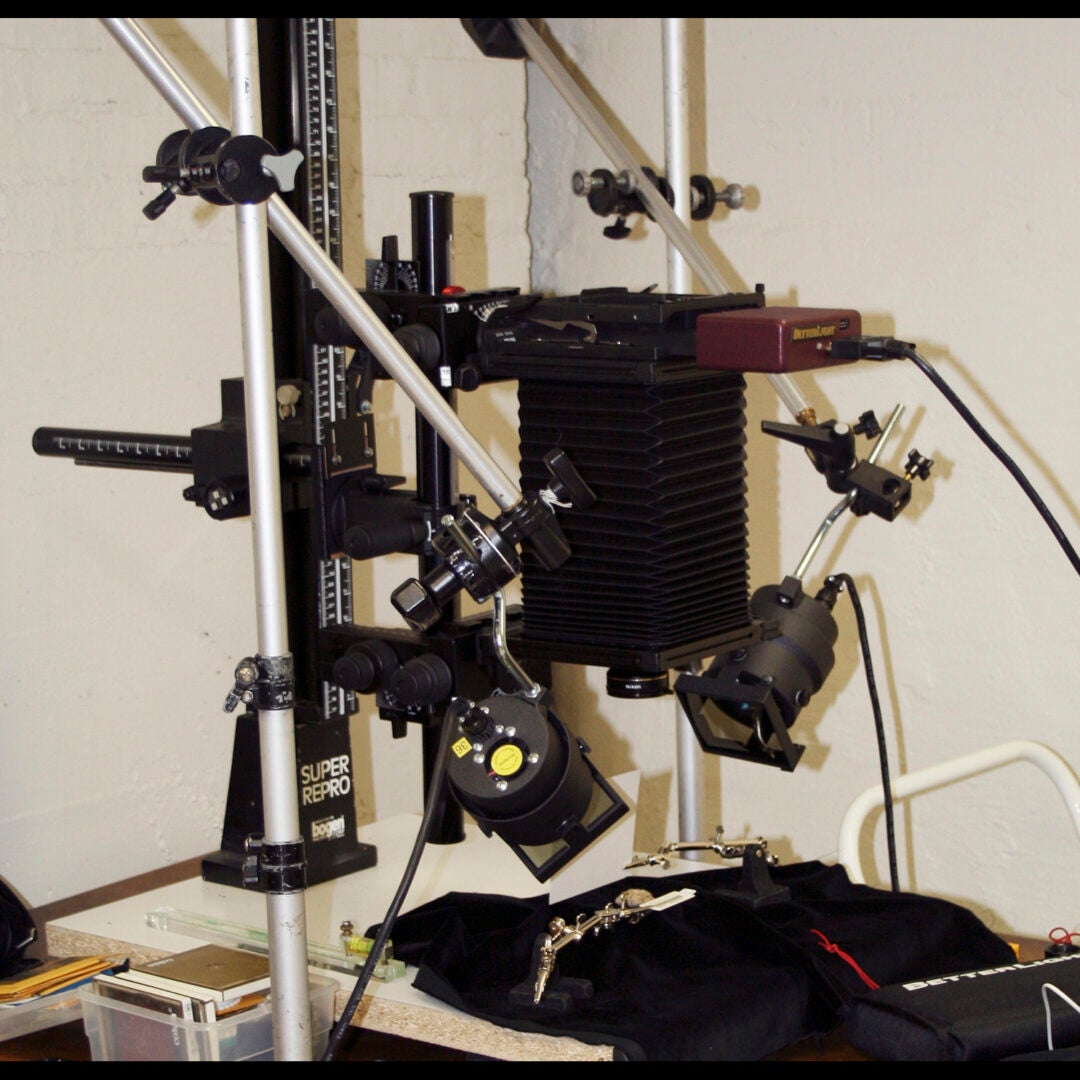
Photographing a large inscribed statue
Marilyn Lundberg Melzian using a 9-foot camera stand with large format camera and film to shoot the Hadad statue in the Vorderasiatisches Museum in Berlin.
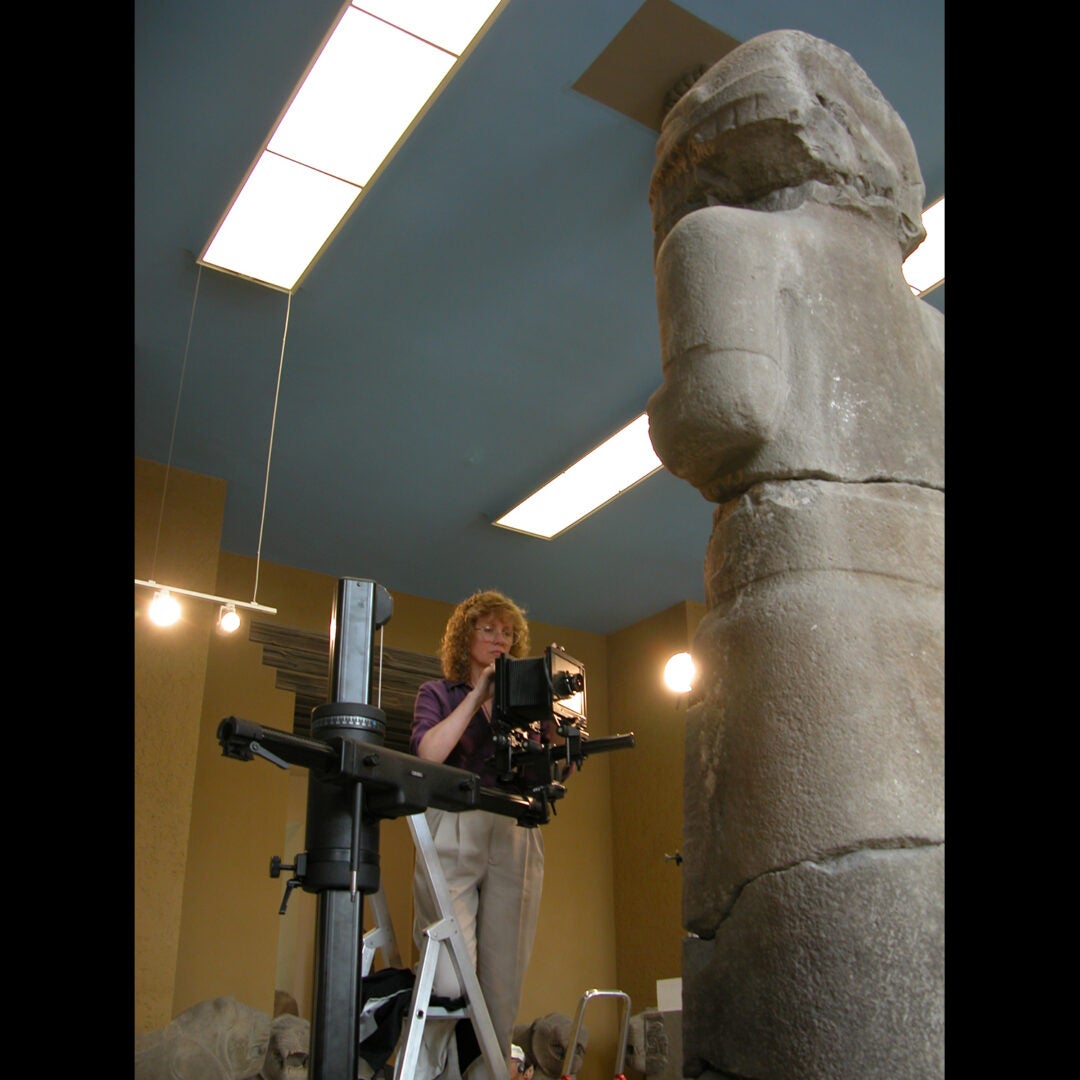
Photographing cliff inscriptions
Tripod with large format camera and film to photograph the Wadi el-Hol early alphabetic inscriptions, 1999. The photographers pictured here are Marilyn Lundberg Melzian and Bruce Zuckerman. The full team also included Chip Dobbs-Allsopp of Princeton Theological Seminary, and John Melzian.
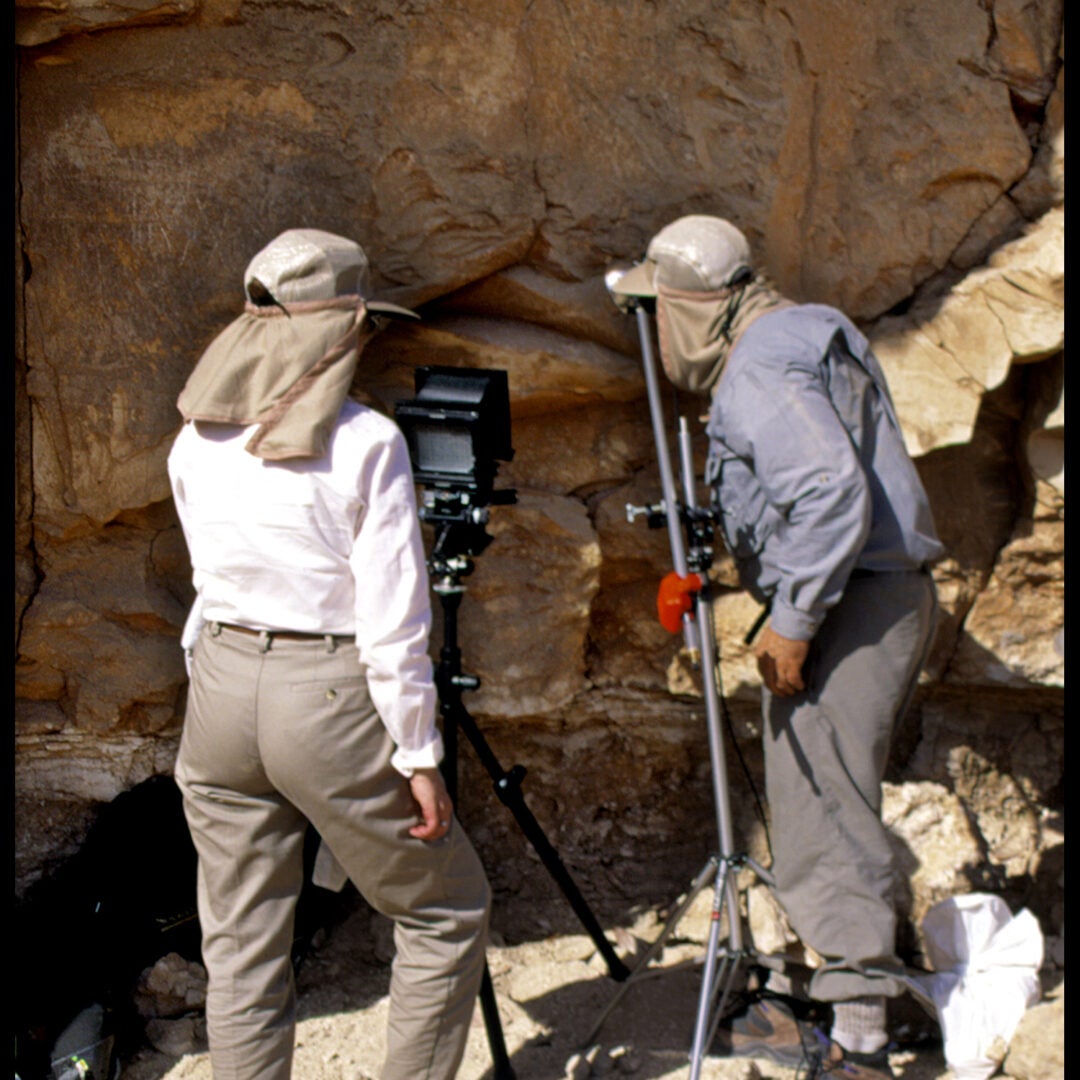
Photographing Dead Sea Scrolls with a sliding platform
Camera stand, large format camera, Better Light scanning back, and sliding platform with a horizontal light to expose the fragments to less light. Bibliotheque Nationale, Paris, 2008. The photographic team consisted of Bruce and Kenneth Zuckerman, and John and Marilyn Melzian.

Light boxes for diffuse light
When photographing the Dead Sea Scrolls we use a view camera and light boxes that distribute the light evenly over the surface. Kenneth Zuckerman is pictured here.
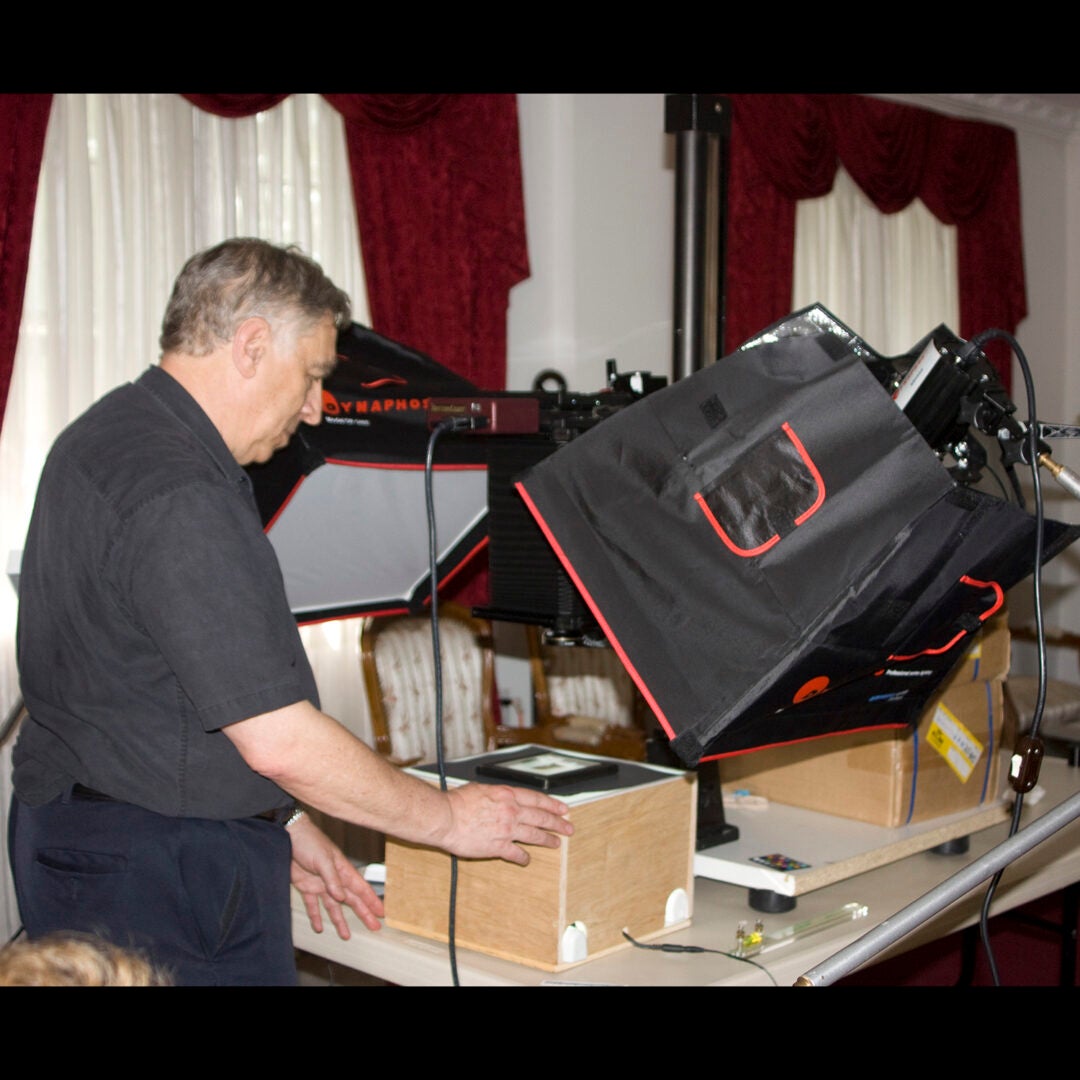
Backlighting
Light boxes are used behind Dead Sea Scroll fragments to avoid shadows which might be mistaken for edges or holes. Bruce Zuckerman is pictured here.
